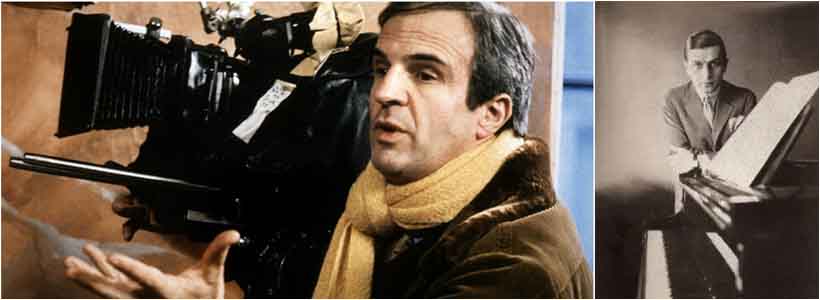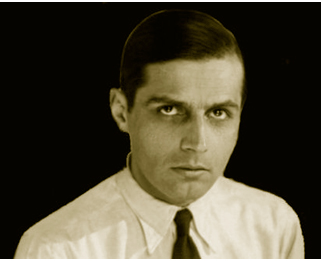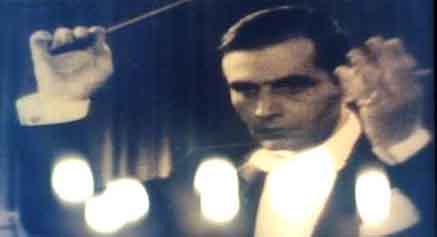In the last T-Boy article, we covered the source of many of our favorite musical soundtracks in film. The titles ranged from Alfred Hitchcock & Bernard Herrmann’s Psycho and Sergei Eisenstein & Sergei Prokofiev’s Alexander Nevsky to Sergio Leone & Ennio Morricone’s Once Upon a Time in the West, Richard Lester & The Beatles’ A Hard Day’s Night and Classical Music in Stanely Kubrick’s 2001: A Space Odyssey. For further details and in-depth analysis, please consider visiting, The Film Soundtracks in Our Lives, Part I.

Auteur François Truffaut
Auteur François Truffaut was born 1932 in Paris and died 1984 in Neuilly-sur-Seine, near Paris. His mother and stepfather sent Truffaut when he was a young boy to live with various nannies as wll as an important loving grandmother, who nurtured his love of the arts. As a teenager, he was an enthusiastic moviegoer, often found in the front row of Henri Langlois et la Cinémathèque française, which was co-founded by Georges Franju and Jean Mitry. Langlois (1914-1977) was a French film archivist and cinephile. During the Second World War, Langlois and his colleagues helped save many films that were at risk of being destroyed during the Nazi occupation of France
As a pioneer of film preservation, Langlois was an influential figure in the history of cinema, where his film screenings in Paris in the 1950s are often credited with providing the ideals that led to the development of the politique des auteurs (auteur theory) on the generation of young cinephiles and critics who would later become the La Nouvelle Vague (French New Wave). Among the directors included were Truffaut, Jean-Luc Godard, Jacques Rivette, Claude Chabrol, Eric Rohmer and Alain Resnais. The future filmmakers were called les enfants de la cinémathèque (children of the cinémathèque), as they could often be found in the front row of packed screenings.

When Truffaut first took a chair at the cinémathèque he spoke that when the screen lit up, it was the first time he could see films that had been banned, films that he had never been allowed to see, films that he didn’t know had existed, and films that ultimately changed his life – the effect was immense, overwhelming, transformative. Even more so, for Langlois would screen the films, back-to-back, without any breaks between them: westerns by John Ford, comedies by Chaplin, and Josef von Sternberg films with Marlene Dietrich; gangster films by Howard Hawks, musicals by Vincent Minnelli and crime dramas by Robert Bresson and Fritz Lang; and, most importantly, films by Jean Renoir and Alfred Hitchcock, who would become his idols. It was akin to seeing them all at once.
For Godard and Truffaut: In Defense of Henri Langlois et la Cinémathèque française scroll below to post script.
After starting his own film club in 1948, Truffaut met film critic, André Bazin, who had a great effect on his professional and personal life, ultimately becoming his spiritual father. Bazin was the head of another film society and became a personal friend and helped him out of various financial and criminal situations during his formative years. At 18, Truffaut joined the French Army in 1950, but spent the next two years trying to escape, and was arrested for attempting to desert the army and incarcerated in military prison. Bazin used his political contacts to get Truffaut released and set him up with a job at his new film magazine, Cahiers du cinéma (Notebook of Cinema), which allowed Truffaut a platform to echo Bazin’s critical film philosophy, the politique des auteurs, a theory which changed the landscape of film criticism and cinema forever.
For more Auteur, scroll below to post script and see the politique des auteurs.
Composer and conductor Maurice Jauber.

Maurice Jaubert (born 1900 in Nice) was a prolific French composer who scored some of the most important French films of the early sound era. Jaubert grew up in a musical household, and began playing the piano aged five. Jaubert left for Paris and studied law and literature at the Sorbonne, but became seduced by classical music. His music was written in a style of clarity, frankness and freedom, in which he did not seek novelty for the sake of it, where his spontaneity is not weighed down by pedantic formulas.
Maurice Jaubert was the second son of François Jaubert, a lawyer who would become the president of the Nice Bar Association. He followed in his father’s footsteps and upon graduation from the Sorbonne, became the youngest lawyer in his hometown.
After Jaubert was awarded the baccalaureat (a college bachelor’s degree), from the Lycée Masséna in Nice in 1916, he enrolled at the Nice Conservatory of Music, where he studied harmony, counterpoint and piano. He was awarded the first piano prize in 1916.
Although Maurice Jaubert understood and appreciated film composing and scoring, he also had other creative musical outlets. As music director of Pathé-Nathan studio, he conducted musical orchestrations of several other composers, including Arthur Honegger and Darius Milhaud.

Left to right: Maurice Jaubert, French writer Jean Giono, and Brazilian-French film director, Alberto Cavalcanti, courtesy of Underscore,fr/portraits.L
Jaubert was a French army officer in engineering during World War I, and was demobilized in 1922. The next year he completed his musical education in Paris with Albert Groz, while undertaking a variety of music related jobs such as proof correction and checking Pleyela rolls.
The compositions by Jaubert’s in the early 1920s included songs, piano pieces, chamber music and divertissements. He wrote his first stage music in 1925 for a play by Calderón, Le Magicien prodigieux, using the Pleyela, a revolutionary player piano at the time. He was then hired by Pleyel to record rolls on the Pleyela.

Left to right: Maurice Ravel, French Romantic composer and best man at Jaubert’s wedding; Georges Neveux, devenu secrétaire de La Comédie; and Jaubert as the new smiling husband, courtesy of Underscore,fr/portraits.
Jaubert as a young composer, was attracted by technical innovations that could serve his artistic aspirations. While working on the play, Le Magicien prodigieux, he met a young soprano, Marthe Bréga, who would later sing most of his vocal compositions. They married in 1926, with composer, Maurice Ravel as his best man.
In 1929, while pursuing his work for the concert hall and the stage, Maurice Jaubert began writing and conducting for the cinema. He collaborated with prominent directors such as Alberto Cavalcanti (Le Petit Chaperon Rouge), Jean Vigo (Zero for Conduct and L’Atalante), René Clair (Quatorze Juillet), Julien Duvivier (Carnet de bal and La Fin du Jour), and Marcel Carné’s Drôle de drame, Hôtel du Nord and Quai des brumes (Port of Shadows).
Maurice Jaubert and François Truffaut

Thirty years after Maurice Jaubert’s death, director François Truffaut, purchased the publishing rights to four of his orchestral compositions.
It is believed that Truffaut first discovered Jaubert’s compositional music scores on the radio, but it’s never been determined which score he first heard. Perhaps it was Jean Vigo’s L’Atalante, where Jaubert in an early scene asked his musicians play the score backwards, similar to what George Martin would do in The Beatles’ recordings 35-years-later. Or, possibly from the film, Carnet de bal, where Jaubert enhanced director Julien Duvivier’s illusionary imagery with his own brillant use of lyrical imagery in his compositional music soundtrack.
Nevertheless, an emotional bond was set, when Truffaut used four of Jaubert’s orchestral compositions to four of his own films: Le Chambre Verte, L’Histoire d’Adèle, L’Homme qui aimait les femmes and L’Argent de poche.
Le Chambre Verte (The Green Room, 1978) was a deeply personal project for Truffaut, where he spent several years working on the film’s script, played the main character, Davenne, and felt a special connection to the theme of honoring and remembering the dead. In the film, he finds a forgotten, derelict altar, and rebuilds it and rechristens it as his own Altar of the Dead. The film is adapted from Henry James’ 1895 short story, Altar of the Dead and also two other works by James: The Beast in the Jungle and The Way It Came. Inside the chapel Davenne places portraits of people from his own life, which included composer Maurice Jaubert, writer Henry James and actor Oskar Werner, taken from footage of Jules and Jim, when Werner was an Austrian-German soldier during the Great War.
Cécilia, played by Nathalie Baye, then better known as the script girl in Truffaut’s1973 film, La Nuit américaine (Day for Night), plays the role of a young woman who helps him build his alter. Complications arise when Cécilia requests that one of the candles represent her former deceased lover, but is rebuffed by Davenne, due to a betrayal by the deceased man in the past.
Le Chambre Verte was one of Truffaut’s most critically praised films, and considered by some as his most personal, but also one of his least successful financially. From that point on, Truffaut’s films were never quite the same, making more popular mainstream films like the crowd pleasing Le Dernier Métro, a 1980 historical drama film, which won ten César Awards for best film, best actor (Depardieu), best actress (Deneuve), best cinematography, best director, best editing, best music, best production design, best sound and best writing. The box office and accolades were immense, but for many serious critics it spelled the kiss of death of Truffaut’s personal films. Truffaut followed with La Femme d’à côté, a film about adultry, and the detective film, Vivement dimanche!, where he did display his personal vision in his love of genre films. In a sense; one for Renoir and one for Hitchcock.
The 1975 film, L’Histoire d’Adèle (The Story of Adèle H.) is a historical drama directed by François Truffaut, and starring Isabelle Adjani, Bruce Robinson and Sylvia Marriott, based on Adèle Hugo’s diaries. The narrative is about Adèle Hugo, the daughter of writer Victor Hugo, once considered the most famous man in France. Victor Hugo was so famous that Adèle would only use the first initial of her surname to hide her identity. Adèle Hugo’s unrequited love for a military officer leads to her downfall. Throughout the film she is on a quest to find the military officer, but, as the film ends, she has become battered and weary to the point of destitution, that when she finally finds the officer, she passes by him without realizing who he is.
As in all four of Truffaut and Jaubert films, the images, sound and music are profound. But much notice was given to 20-year-old Isabelle Adjani, who justifiably received critical acclaim for her performance as Adele H., which led to her status as a legend on the French screen today.
Truffaut’s 1977 film, L’Homme qui aimait les femmes (The Man Who Loved Women) is billed as a romantic comedy about a man who loves women. The film stars Bertrand Morane, played by Charles Denner, a Truffaut regular who had appeared in his earlier films, 1968’s La Mariée était en noir (The Bride Wore Black) and 1972’s Une belle fille comme moi (Such a Gorgeous Kid Like Me). The movie begins with one the most joyful funerals in film history, where in attendance are all the women with whom Morane loved in his life. The ensemble of female actors is too irresistible not to list, which features, Brigitte Fossey, the former child star of Clément’s1952 landmark film, Jeux Interdits (Forbidden Games), Leslie Caron, with no introduction required; Nelly Borgeaud as one of Bertrand’s emotionally unstable lovers; Geneviève as Hélène, a lingerie saleswoman; and Valérie Fabienne, one of Bertrand’s former lovers, who he regrets making her think that he wanted a serious relationship with her.
As noted above, Bertrand Morane loved women, as Truffaut did as well; so, let’s close with the opening of one of the cinema’s most euphoric funeral sequences in L’Homme qui aimait les femmes.
The cast also included, Roselyne Puyo as Nicole, in a bit part as an usherette, who in real life is deaf. Truffaut also served as a passionate voice for those who suffered from disabilities; reminding audiences that they too exist, and to also show those who suffer with disabilities, a pathway to live a relativity normal life and join or re-join “normal society.” This act of courage is best illustrated by T-Boy’s Brom Wikstrom. So take a trek to Machu Picchu in a mobile wheelchair with Brom and his bride, Anne’: Looking Back: Lima, Machu Picchu, Peru – Brom Wikstrom, Traveling Boy
In 1976’s L’Argent de poche, Truffaut mixes the story of his actors with childhood experiences and the challenges of a number of children. Scenes include life at school; a toddler and a cat, playing on an open windowsill but falling down unhurt; a young girl, played by Truffaut’s daughter, causing confusion with a bullhorn; Bruno showing his friends how speak to girls; a double date at a movie theater; a child telling a dirty joke; first love and a first kiss. The main character is the motherless Patrick, who lives alone with his father who uses a wheelchair for mobility and an automatic page turner to read books. His mysterious friend, Julien, lives in poverty, has long unwashed hair and cannot stay awake at school due to long nights without sleep, wandering the empty, dark city streets. Patrick notices Julien constantly refuses to change his clothes for gym class, and his curious why does not.
In the end, Julien and his classmates realize why he doesn’t remove his clothes for gym classes; to hide his bruises that cover his body, making it obvious that he was beaten by his parents. Once the criminal news of Julien’s parent’s cruel abuse becomes public, he is rescued from his family, who are arrested as angry mobs of citizens pound their fists on the police wagon, aware that abusing a child is the greatest crime ever commited by a parent.
L’Argent de poche ends with an important message by one of the schoolteachers, Jean-François Stévenin, in a stunning performance by Jean-François Richet, about child abuse, injustice, children’s rights, hope, love and resilience: Of all mankind’s injustices, injustice to children is the most despicable! Life isn’t always fair, but we can fight for justice… If kids had the right to vote, they would have better schools. Life isn’t easy. You must learn to be tough. I don’t mean ‘gangster-tough’. What I mean is having endurance and resilience… Time flies. Before long, you will have children of your own. If you love them, they will love you. If they don’t feel you love them, they will transfer their love and tenderness to other people. Or to things. That’s life! Each of us needs to be loved.”
François Truffaut’s first feature: Les quatre cents coups

Jean-Pierre Leoud plays a loose version of Truffaut in 1959’s “Les quatre cents coups” (“The 400 Blows”), a film highly influenced by Jean Vigo’s “Zero for Conduct” which paralleled tragic instances in Truffaut’s own childhood. Before the film was made, Truffaut dedicated it to his spiritual father, Andre Bazin, who succumbed to death prior to the film’s release. Photograph courtesy of In a Lonely Place Film, Growing-up is Still Difficult.
The narrative of Les quatre cents coup is taken from the point-of-view of Truffaut’s cinematic counterpart, Antoine Doinel, a reacurring character who appeared in four features and one short film, often referred to as the Antoine Doinel Cycle. The film re-creates the trials of Truffaut’s own childhood, unsentimentally portraying aloof parents, oppressive teachers, and petty crime, with Antoine Doinel played by actor Jean-Pierre Léaud, a veteran of six and a half of Truffaut’s films. Les quatre cents coup marked Truffaut’s passage from a leading film critic to trailblazing auteur of the La Nouvelle Vague. In the 2022 Sight & Sound Critics’ Poll, Les quatre cents coups was ranked 50th as one of the greatest films ever made.
Truffaut and Fatherhood
In both of Truffaut’s public and private life, the concept of fatherhood was an endearing theme; a biological father who abandoned him in his early childhood; Andrea Bazin, his spiritual father; Jean Renoir and Alfred Hitchcock, fathers who mentored his own love and art in cinema; and Jean-Pierre Léaud, who referred to Truffaut as his cinematic father. Later, after Léaud appeared in Antonie and Collete, he played in a number of Jean-Luc Godard films, and was quoted as saying: If Truffaut is my father, then Godard is my uncle. As Truffaut became older he became obsessed with finding the name of his own biologicall father to the point of hiring private detectives. Eventually the name of his real father was found, a successful French dentist of Jewish ancestry.
François Truffaut: film critic, now director, received the award for Best Director at the 1959 Cannes Film Festival.
In 1958, François Truffaut was regarded as the enfant terrible of film critics, due to the politique des auteurs, and was banned from the Cannes Film Festival. The next year, he submitted his directorial debut to the festival, Les quatre cents coups and received the award for Best Director and a Palme d’Or nomination. From that year onward, Truffaut’s life dramatically changed forever.
Truffaut as Actor
English language film director Alfred Hitchcock made cameo appearances in 40 of his 53 surviving major films. Truffaut was also fond of appearing in his own films, but often as a lead character. He also appeared in films made by other directors, such as the playing the role of Claude Lacombe, a French scientist with a bad command of English, in Steven Spielberg’s 1977 film, Close Encounters of the Third Kind. Later, Truffaut spoke of his own first encounter on the film’s set: When I first arrived on the set of the Spielberg film, I quickly put my book by Stanislawski back into my suitcase.
Jaubert as Composer
As music director of Pathé-Nathan studio, Jaubert conducted the film scores of several other composers, including Arthur Honegger and Darious Milhaud. In the 1930s he gained a reputation as a conductor in France and abroad, most notably for the final season of Marguerite Bériza’s opera company and the season of opéras-bouffes for the 1937 exposition. At the Comédie des Champs-Élysées, in 1937, he conducted the premiere of Philippine, an opérette, by Marcel Delannoy with libretto by Henri Lyon and Jean Limozin.
Maurice Jaubert (1900-1940)
Jaubert enlisted in a French army engineering company during World War II which he would command as a reserve captain. When his company mobilized in September 1939, he was fatally wounded after having successfully blown up a bridge. He died at age 45 a few hours later at the Baccarat Hospital on June 1940. His letters to his wife reflected a spirit of sacrifice tinged with deep humanism. Jaubert did not live to hear his last two compositions, written at his base camp. Jaubert’s gravesite rests in Montmartre Cemetery in Paris.
Maurice Jaubert left a legacy of written articles about lectures, his musical tastes and political opinions, which included a passionate support of German-born American composer Kurt Weill, who created a revolutionary kind of opera of sharp social satire in collaboration with the writer Bertolt Brecht.
François Truffaut, (1932-1984)
Truffaut suffered from a brain tumor and underwent an operation at the American Hospital in Neuilly-sur-Seine on September 12. He died just over a year later in the hospital on October 21, 1984 at the age of 56-years-old. At his bedside were Madeleine Morgenstern, film producer and ex-wife; their two children, Laura and Eva; and actress Fanny Ardant, with wholm he lived with from 1981 to 1984 and had a daughter, Joséphine Truffaut (born September 1983). Ardant apeared in Truffaut’s final two films, La Femme d’à côté and Vivement dimanche! As he had requested, his body was cremated and his ashes were buried also in the Montmartre Cemetery in Paris. Truffaut was an atheisit, but chose to have a Mass celebrated for him at the church of Saint-Roche, believed to be in the honor of the Roman Catholic Church.
At the time of Truffaut’s death, he was considered by many critics and moviegoers as the most popular French film director of his era. Film audiences flocked to his films, whose main themes were passion, women, childhood and awareness of the disabled, which struck a chord with both critics and moviegoers alike.
To hear more about François Truffaut and Maurice Jaubert, consider purchasing the album, Bandes Sonores Originales Des Films, which includes the scores, L’Argent de poche, L’Histoire d’Adèle, L ‘Homme qui aimait les femmes and Le Chambre Verte, available on vinyl and CD.
And don’t miss film critic Walt Mundkowsky’s film review of François Truffaut’s “Stolen Kisses” – A Look Back – Traveling Boy
Also, if you wish to revisit The Film Soundtracks in Our Lives, Part I, see Ennio Morricone and Sergio Leone’s Spaghetti Western, Once Upon a Time in the West. You can buy, but not on our site, Morricone’s Complete Spaghetti Western Compilation, also available on vinyl or in three-discs or a five-box set on CD.
POST SCRIPT:
Godard and Truffaut: In Defense of Henri Langlois et la Cinémathèque française
In 1968, French culture minister Andre Malraux tried to fire Henri Langlois by stopping funding of la Cinémathèque française, allegedly due to Langlois’ arrogance and iron-fisted rule. Local and international uproar ensued, and even the prestigious Cannes Film Festival was halted in protest that year. Malraux eventually backtracked. Below is an announcement made in 1968 by Jean-Luc Godard and They were once soliders-in-arms in the art of cinema, but as their careers’ progressed, Godard’s films became increasingly political, specifically Marxist, and dismissed Truffaut as a bourgeoisie film director. Truffaut replied, I make personal films, and I can’t remember the last time I took a bus.
READ More: the politique des auteurs – The policy or politics of auteurs: In his 1954 journal, Une certaine tendance du cinéma français (A certain trend in French cinema) Truffaut wrote as a critic for the French film publication, Cahiers du Cinéma (Cinéma Notebook) and introduced the concept that directors should be considered the real creators of the films they create. When translated literally, the French word auteur means author in English. The term is applied to a film director with complete creative control over their work, often defined as a director who has a recognizable personal style, signature and vision which is evident in each film they make. When applied to the other arts, a painting by van Gogh or a symphony by Mahler is instantly recognizable to audiences. When film critic and director, Jean-Luc Godard wrote that Hitchcock was as profround an artist as Dostoevsky, traditional film critics thought he had gone mad. They failed to recognize that Hitchcock was just as profound in his own medium of film as Dostoevsky was in his medium of literature.
Truffaut referred French directors, Jean Renoir, Robert Bresson and Jacque Tatil as auteurs. He contrasted auteurs with directors of commercial studio films, whom he called, merely “metteur en scène” or stagers of a script created by someone else.
In the US, The Auteur Theory was coined and expanded by New York film critic, Andrew Sarris, the Father of American Auteurism. After Truffaut first introduced this new theory, which was based on film critic, Andre Bazin’s earlier work, it eventually spread to the US in 1963 through the writings of Sarris and film critic/director, Peter Bogdanovich.
But, many US film critics thought the concept was preposterous to the point that a film director should even be called an artist. This applied, in particular, to the highly influential San Franciso based film critic, Pauline Kael, who attacked both the theory and Sarris. The battles between them were legendary, and still discussed today, even though Kael finally embraced the theory and championed her own favorite directions, Robert Altman, Sam Peckinpah, Bernardo Bertolucci and even Truffaut. In the end, Sarris said that Kael was not anti-auteur, but anti-genre, and recognized the director as an artist, but still not necessarily the sole artists in a collaborate medium which included cinematographers, edits, art directors, etc. Sarris counter with, who is in charge of all the collaborators who helps the director create their personal vision of a film?
Truffaut on Cinephiles: But the cinephile is… a neurotic! (That’s not a pejorative term.) The Bronte sisters were neurotic, and it’s because they were neurotic that they read all those books and became writers. The famous French advertising slogan that says, “When you love life, you go to the movies,” it’s false! It’s exactly the opposite: when you don’t love life, or when life doesn’t give you satisfaction, you go to the movies.
Art is not scientific; why should criticism be? The main complaint against some critics, and a certain type of criticism, is that too seldom do they speak about cinema as such.
Every critic should take to heart Jean Renoir’s remark: All great art is abstract. He should learn to be aware of form, and to understand that certain artists, for example Dreyer or Von Sternberg, never sought to make a picture that resembled reality.
























Candace
May 17, 2024 at 10:17 am
Marvelous article. It;s obvious you were enamored by the French and Italian directors of the 60s and 70s. One can’t help but imagine what it would have been like if those directors put you under their wings. You could have been another Spielberg or Copolla.
I am looking up these old film masterpieces to see things from your point of view.
The insights in Traveling Boy are top notch!
Bruce
May 17, 2024 at 10:18 am
How do you know all this Mr. Boitano? Are you a film major?
You’re certainly an expert.
Drake
May 17, 2024 at 10:21 am
I didn’t know Bisset spoke French. She was a goddess way back then. Her screen actors must have fallen in love with her.
I wish there was a streaming channel that featured all of these films. Good writeup!